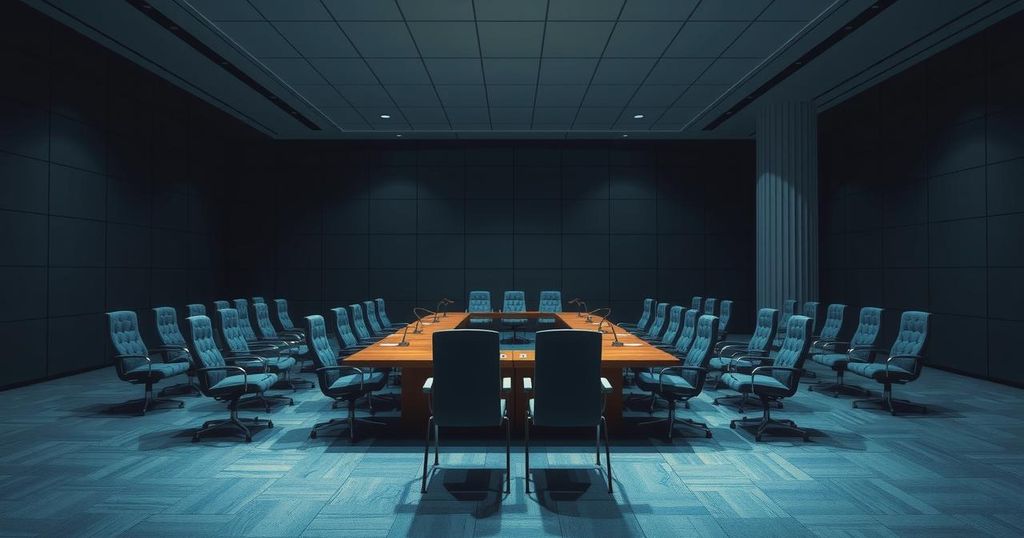Ukraine and Russia Engage in Peace Talks Amid Ongoing Military Strikes

Russia and Ukraine have held peace talks but failed to make progress toward ending the war. The only agreement reached was to swap 6,000 dead soldiers and discuss serious troop exchanges. Russia’s conditions for a ceasefire were presented, but Ukraine remains skeptical. Recent drone attacks have further escalated tensions, complicating peace efforts.
ISTANBUL (AP) — In a recent round of negotiations held in Istanbul, representatives from Ukraine and Russia met for the second time in just over two weeks. Unfortunately, no significant advancements were made toward resolving the ongoing war, now entering its third year. The only notable outcome from the talks was an agreement to swap thousands of deceased and critically wounded soldiers from both sides.
The backdrop of these negotiations was stark, with each side launching long-range attacks the day prior. Ukraine executed a drone strike on Russian airbases, while Russia retaliated with its most extensive drone assault on Ukraine to date. This escalatory exchange adds tension to an already fraught atmosphere at the bargaining table.
According to the Ukrainian delegation, led by Defense Minister Rustem Umerov, Russia presented a memorandum outlining its terms for a ceasefire. Umerov indicated that Ukrainians will need about a week to analyze this document before formulating a response. He mentioned a possible range of dates for future talks between June 20 and June 30.
Details from the Russian memorandum indicate that Moscow expects Ukraine to withdraw from the four regions it annexed in September 2022, as a precondition for any ceasefire. Moreover, the memorandum suggested Ukraine halt its military mobilization and suspend Western arms deliveries too. Previous demands from Russian President Vladimir Putin were echoed in this document, which further insists on a complete freeze on military actions.
The memo proposes that Ukraine lift martial law, conduct elections, and ultimately sign a comprehensive peace treaty which would restrict Ukraine from pursuing NATO membership and recognize Russian as an official language alongside Ukrainian. These stipulations have faced outright rejection from both Ukraine and its Western allies in the past.
Additionally, the delegations agreed on the exchange of 6,000 bodies of soldiers killed during the conflict and established a commission to facilitate the transfer of seriously wounded troops. Meanwhile, Ukraine reported considerable success from its drone operation, which damaged or destroyed over 40 aircraft at various locations inside Russia — ranging from the Arctic to the Far East.
In an atmosphere clouded by skepticism about peace, U.S.-led efforts to foster a ceasefire have not borne fruit. While Ukraine appears receptive to a truce, the Kremlin has effectively rebuffed recent proposals. Persistent communications between senior officials from both nations reveal that they remain far apart on critical issues that hinder peace.
Turkish President Recep Tayyip Erdogan characterized the renewed negotiations as an achievement, especially given the prior day’s military incidents. During these talks, Ukrainian President Volodymyr Zelenskyy hinted at a new slate of prisoner exchanges, following the previously discussed swap on May 16, which saw 1,000 prisoners exchanged.
As the situation continues to evolve, Ukraine’s leadership has submitted a formal list of children they claim were forcibly removed from their homeland and need repatriation. In response, Russian officials have argued that children will be returned only if family contacts can be established, a claim which has sparked criticism from the Ukrainian side.
Zelenskyy emphasized that should the Istanbul talks lead to insincere negotiations, it would warrant increased international pressure and sanctions on Russia — indicating that without such measures, the war would persist unyieldingly.
In the ongoing violence, the conflict along the extensive front line is relentless. Russian forces have led shelling in Ukraine’s Kherson region, resulting in fatalities and injuries, among whom were children. As the situation remains dire, both sides continue to engage in significant military operations, indicating that the prospect of peace remains grim.
The latest round of negotiations between Ukraine and Russia yielded minimal results, with a focus primarily on troop exchanges rather than substantial steps toward peace. As both countries continue their military operations, the international community remains hopeful yet skeptical about the lengthening conflict. Ongoing casualties and failed ceasefire negotiations highlight the challenges both sides face in achieving a diplomatic resolution.
Original Source: www.piquenewsmagazine.com








